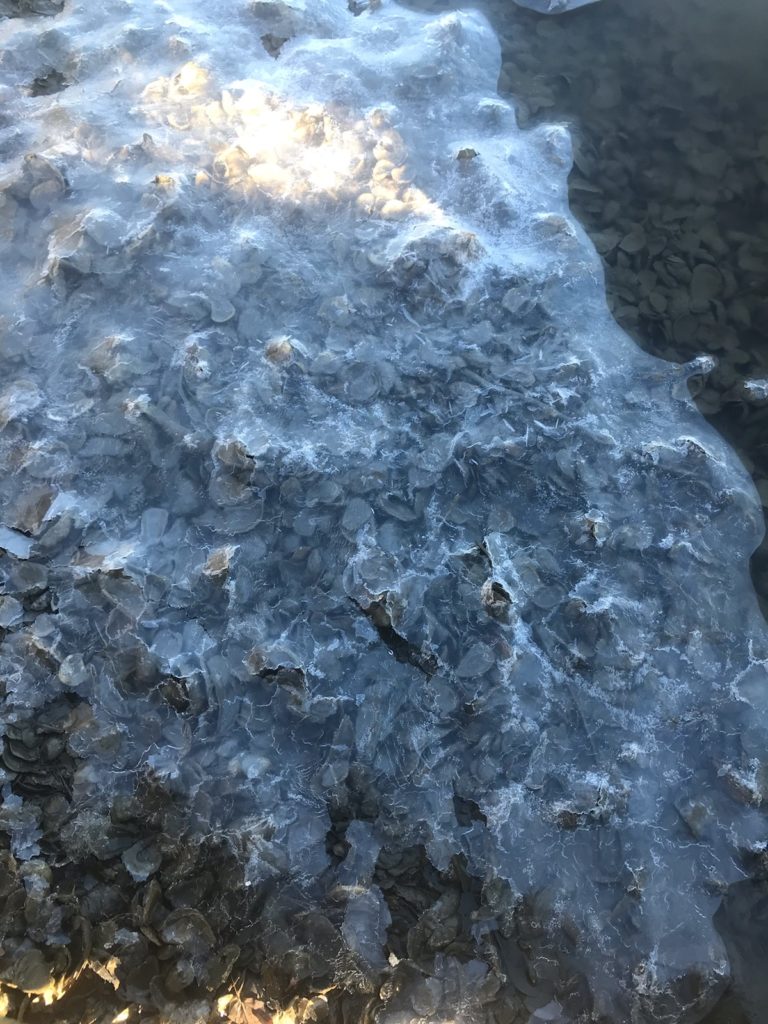By Mary Reid Barrow
An oyster on an intertidal reef in winter is at the mercy of the tides and temperatures.
Unlike many animals in the sea, oysters don’t have fins and can’t swim to deeper, warmer water and they don’t have legs and can’t burrow under the sand to escape the cold.
Oysters are immobile, cemented to their equally immobile brothers and sisters in a great big condo of a river home.
Since oysters can’t escape freezing waters, most oysters reefs are on subtidal reefs in the deeper waters of the Chesapeake Bay, according to “Life in The Chesapeake Bay,” by Alice Jane Lippson and Robert L. Lippson.
But intertidal reefs are common in warmer climates farther south and and there are some in shallow areas along Virginia’s southeast coast.
In freezing weather, an intertidal reef is underwater at high tide but exposed to the colder air at low tide. Unfortunately a frozen oyster will die
As anyone who has tried to keep oysters in a cooler outside, over the holidays, say, knows the fine line you tread. The weather has to be cold enough to keep the oysters refrigerated, or they will die. But on the other hand, if the temperatures drop below freezing , and the oysters freeze, they also will die.
The same thing is true on an intertidal reef. Oysters living on the intertidal reef in front of Brent James’ home on the Lynnhaven River were a case in point recently. Brent is the Oyster Restoration Coordinator for LRNow.
When the temperature dropped below freezing and the tide was low one night last week, he knew conditions spelled danger for his oysters. That morning, he took this photo of the shellfish in a “shroud of ice” as he described it.

“And that’s saltwater, mind you,” Brent said.
Freshwater freezes at 32 degrees Fahrenheit while salt water freezes at 28.4. It takes salt water almost twice as long as fresh to freeze.
Fortunately the other night, the temperatures didn’t stay below freezing for long, The tide began to rise and James’ oysters were safe.
“The low tide was concurrent with the lowest temps last night so it was a bad combo,” he said, “but once the sun came along with the rising tide, the ice quickly disappeared,”
On the other hand oysters on an intertidal reef can die in a long deep freeze, he said. “Fortunately last night’s freeze was of short duration.”
When an oyster reef dies, it’s not all for naught. Land animals like crows, gulls and raccoons move in to eat the oysters at low tide, Brent said.
“Then fish and eels move in once the tide has recovered the reef,” he added
There’s a reason an oyster reef is often called an oyster bar, both in nature and at an oyster roast.
Do you have a favorite tree or plant with a story to tell? What relationships have you observed between plants and critters? Who eats whom? Who has babies where? Send an email to maryreid@lrnow.org